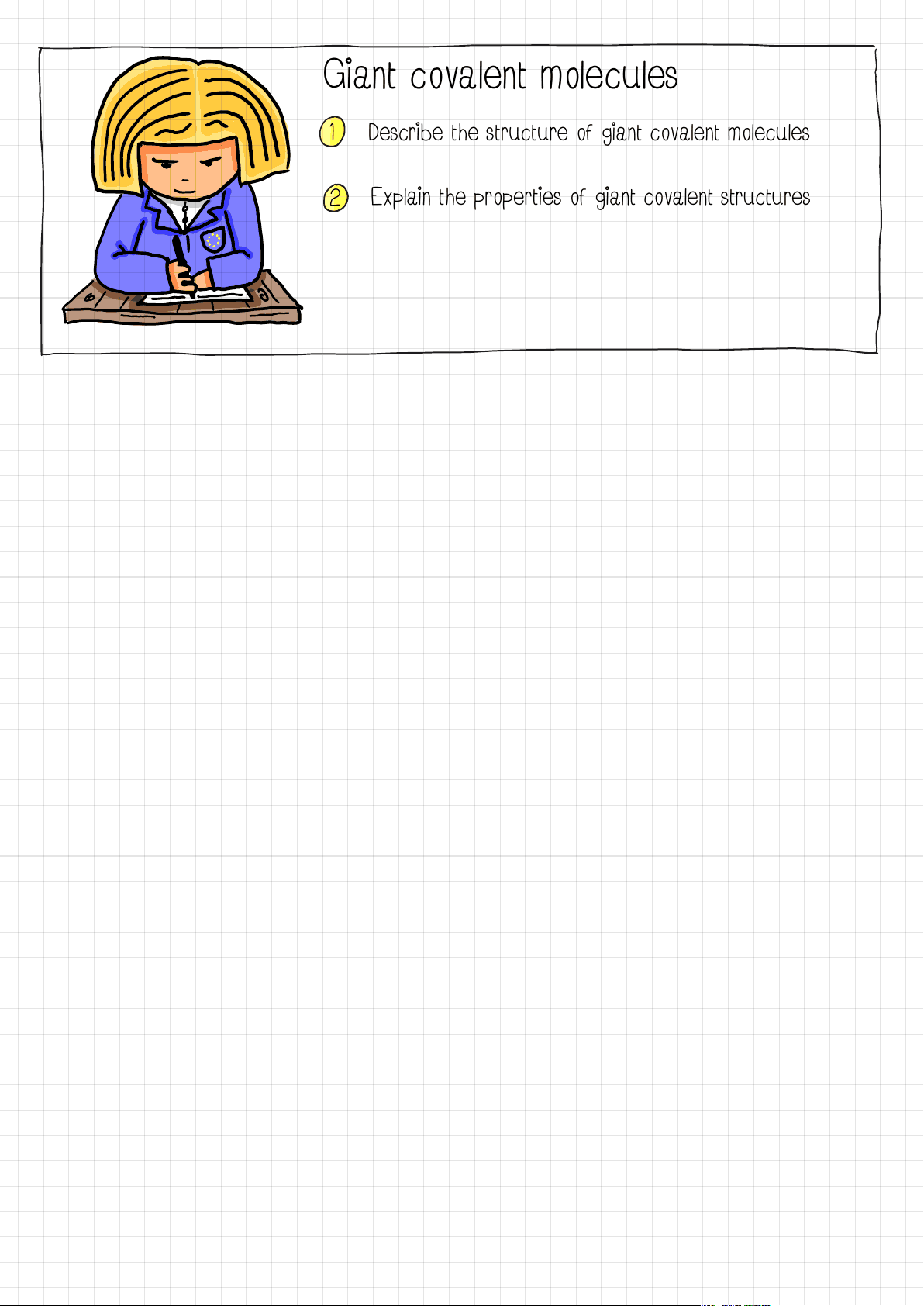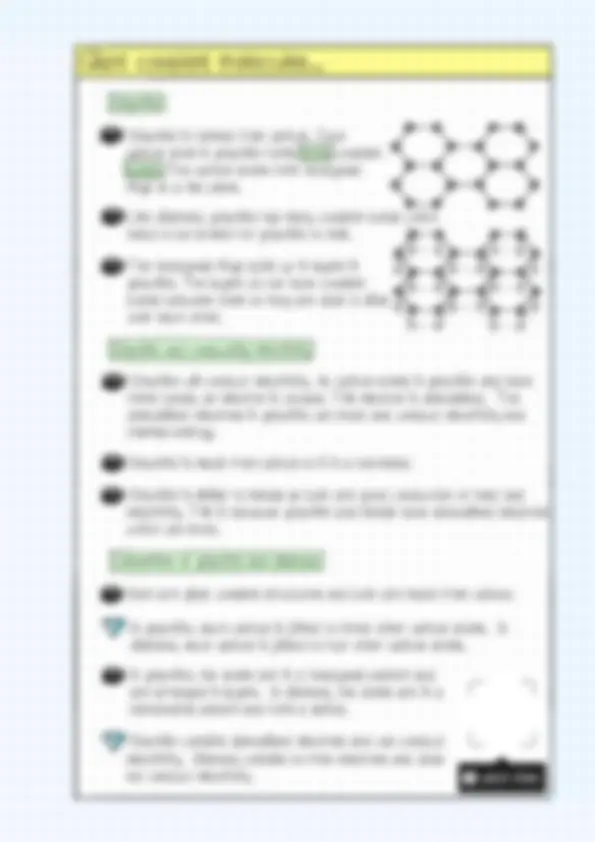



Study with the several resources on Docsity

Earn points by helping other students or get them with a premium plan


Prepare for your exams
Study with the several resources on Docsity

Earn points to download
Earn points by helping other students or get them with a premium plan
Community
Ask the community for help and clear up your study doubts
Discover the best universities in your country according to Docsity users
Free resources
Download our free guides on studying techniques, anxiety management strategies, and thesis advice from Docsity tutors
An overview of giant covalent molecules, focusing on their structure and properties. Topics include the description of diamond and silicon dioxide, their covalent bonding, and their unique physical and electrical properties. Additionally, the document discusses graphite, its hexagonal structure, and its ability to conduct electricity due to delocalized electrons. Students are expected to identify and explain these concepts in an exam.
Typology: Lecture notes
1 / 3

This page cannot be seen from the preview
Don't miss anything!


Describe the structure of giant covalent molecules Explain the properties of giant covalent structures
Review Small covalent molecules such as O , NH and CH have low melting and boiling points. These properties are because they have weak intermolecular forces. Properties of giant covalent molecules Giant covalent molecules consist of millions of atoms joined together by covalent bonds. Examples of giant covalent molecules include diamond, silicon dioxide and graphite. Giant covalent molecules are solid at room temperature. They always have high melting and boiling points. Diamond Diamonds are formed from carbon. In diamond, each carbon forms four strong covalent bonds. Diamonds have huge numbers of covalent bonds which have to be broken when diamond sublimates (approx 3,700 C). carbon Silicon dioxide Silicon dioxide contains the elements silicon and oxygen which are covalently bonded. silicon oxygen Silicon dioxide has a high melting and boiling point. Like diamond a large number of covalent bonds need to be broken for silicon dioxide to melt. Diamond does not conduct electricity. There are no free electrons to carry an electrical charge. The electrons in the outer shell are used to form covalent bonds. Silicon dioxide does not conduct electricity as there are no free electrons to carry an electrical charge In the exam, you will NOT be expected to draw these molecules, but you would be expected to identify them and explain their properties. (^2 3 )
o
E1 (^) 1II 0
° old
§ (^) ⑨
*o÷¥¥¥→